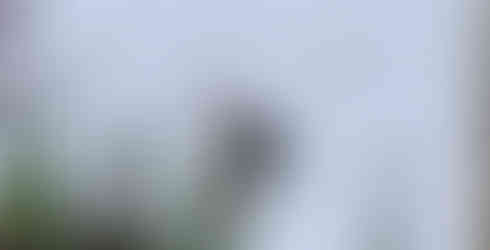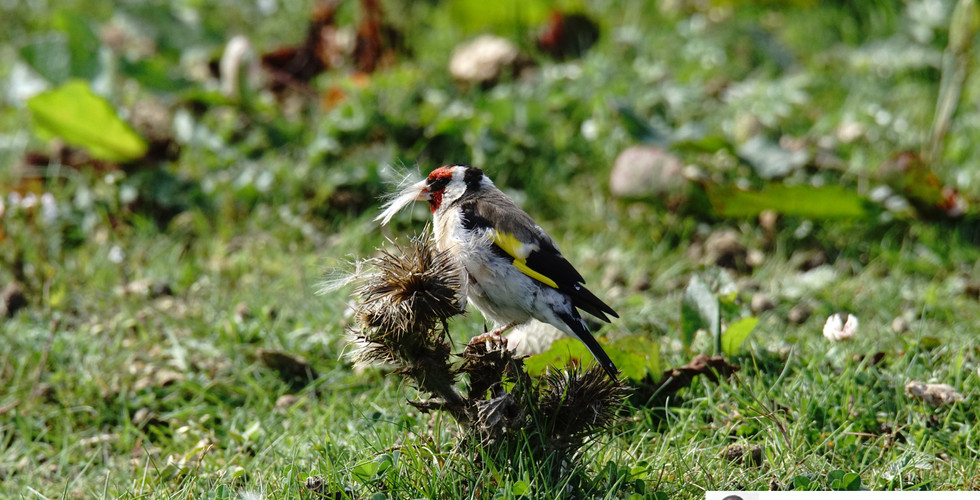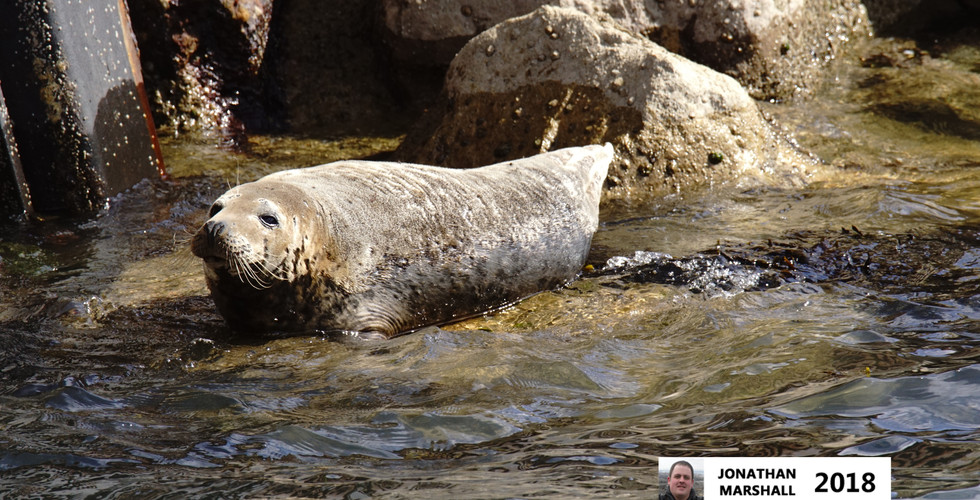TERRIFIC TURNSTONES @ WHITBY
- Jonathan Marshall
- Aug 24, 2018
- 5 min read

On Friday I made a trip across the North Yorkshire Moors to Whitby, calling off at Scaling Dam Reservoir and Staithes on my journey to Whitby. I arrived at Scaling Dam shortly after 10am and I headed down to the hide which is situated right next to the sailing club at the western end of the reservoir. The reservoir is right next to the A171 which runs between Middlesbrough and Whitby. The view from the hide looks out over the water across to the moors beyond with a small area of grassland just in front of the hide.
In the bushes up along the shore line to the right there was a large flock of Goldfinches with one or two of them making occasional trips across to the grass in front of the hide. Along the right hand shore line and in the water there were more than three hundred Greylag Geese with a few Canada Geese dotted amongst them. Over to the left of the hide there were more than a hundred Lapwings and sat on a fence post was a single Herring Gull.
After a few minutes I spotted a pair of Pied Wagtails inching their way along the mud at the water's edge and occasionally wading through the shallow water. A few of the Goldfinches now made more regular visits to the grass in front of the hide, landing on the thistle plants about ten feet away. They spent the next few minutes extracting the seeds from the thistles until all the Lapwings suddenly rose up as one which sent the Goldfinches darting across the grass and into the bushes.

The Lapwings landed again once they felt the danger that had sent them up into the air had passed. The presence of a raptor is usually the danger that sends the Lapwings but on this occasion I could not see one present. Amongst the now resettled Lapwings I saw four Cormorants and further out on the right hand shore line I saw four Grey Herons, all within a few yards of each other. Out on the water there were a few Tufted Ducks and more Greylag Geese and a few Swallows flying overhead.
I now left Scaling Dam and headed to Staithes, arriving shortly before midday and after parking at the top of the village I walked down the hill through the village towards the harbour. Between 1745 and 1746, Staithes was home to Captain James Cook, when he worked as a grocers apprentice before he moved to Whitby and joined the Royal Navy. I walked over the narrow footbridge near the harbour and turned right following the road as it followed the beck past the RNLI lifeboat station.
On the edges of the water and on the mud banks there were Herring Gulls and Jackdaws but not the waders I was expecting to see. I walked round the headland to the left and going to and from their nests on the cliff face were Sand Martins. After about fifty yards the path reached the left hand harbour wall and I now walked along it to the end. Flying low above the sea from left to right was a lone Cormorant which landed on the exposed rocks in the distance over to the right.

I was about to head back along the harbour wall when a fellow visitor spotted a Seal lying on a rock right next to the base of the wall. After watching the Seal for a few minutes I headed back down the harbour wall, over the footbridge and down through the main part of the village to a cafe on the seafront and had my lunch. From the seafront at the other side of the right hand harbour wall I could see several Herring Gulls and a few Oystercatchers on an exposed mass of rock that was slowly being covered by the incoming tide.
Over to my right a Kestrel chased a group of Starlings along the cliff tops and out of sight. At this point I made my way back up the steep hill through the village back to the car and headed along the coast to my final destination. Whitby is where Captain Cook's ship, HMS Endeavour, was built in 1764 and is also where parts of the Bram Stoker book "Dracula" are set and where the author spent his summer holidays.
I parked in the Whitby Abbey car park and headed along the path round the top of the ruins of the Abbey where last year a Desert Wheatear had been seen. As I walked along a Linnet flew over a wall from my left and briefly perched on a hedge before dropping down into it. I had now walked round to the other side of the Abbey where the path now heads towards the steps down into the town.

I took a brief detour before I headed down the steps and entered the grounds of the Church of Saint Mary. I had not walked more than thirty yards when I spotted a pair of Pied Wagtails in a field to the left of the church grounds. After a couple of minutes the Pied Wagtails flew over the wall and landed in the church grounds, moving between and landing on top of the grave stones. Whitby is where Dracula arrives in England and on a bench just in front of the church, overlooking the harbour, is where he claims his first victim.
I now descended the 199 steps and at the bottom turned right and walked along to the viewpoint overlooking the East Pier. Down on the water were several Herring Gulls with a few more flying overhead. I walked back along the road and then over the cobbled streets, past the shops until I reached the road that goes over the swing bridge that spans the River Esk. I had not gone more than a couple of yards over the bridge when down to my right, ferreting amongst the seaweed, I saw half a dozen Turnstones.

The Turnstones were really going at the seaweed, diving in with their long beaks and lifting it up looking for food and after I had managed to get a few pictures I headed over the bridge and turned right. I continued along the harbour wall where there were several Herring Gulls perched at various points hoping to get some scraps dropped by visitors. After a few hundred yards I reached the start of the West Pier where on a pile of rocks next to the pier was a lone Starling amongst several Herring Gulls.
I now walked along the increasingly windy West Pier where there were more Herring Gulls and in the water there was a lone Cormorant. Sat on the fence at the far end of the East Pier were three more Cormorants and as I turned and headed back it began to spit with rain. I headed up the hill and through the whale bone arches and along the top of the cliff where there were several Starlings and Pied Wagtails. After a few minutes I retraced my steps back through the town and up the 199 steps to the Abbey.
As I walked back along the path there were a few Swallows flying low over the fields and a couple of Rooks looking for food. On my way home I drove through Goathland, the setting for ITV drama Heartbeat, where I saw more Rooks and as I left the village I spotted a trio of Red Grouse amongst the grass and heather.
I have attached a few photos and a full sightings list from my visits to Scaling Dam, Staithes and Whitby.




















































































Comments